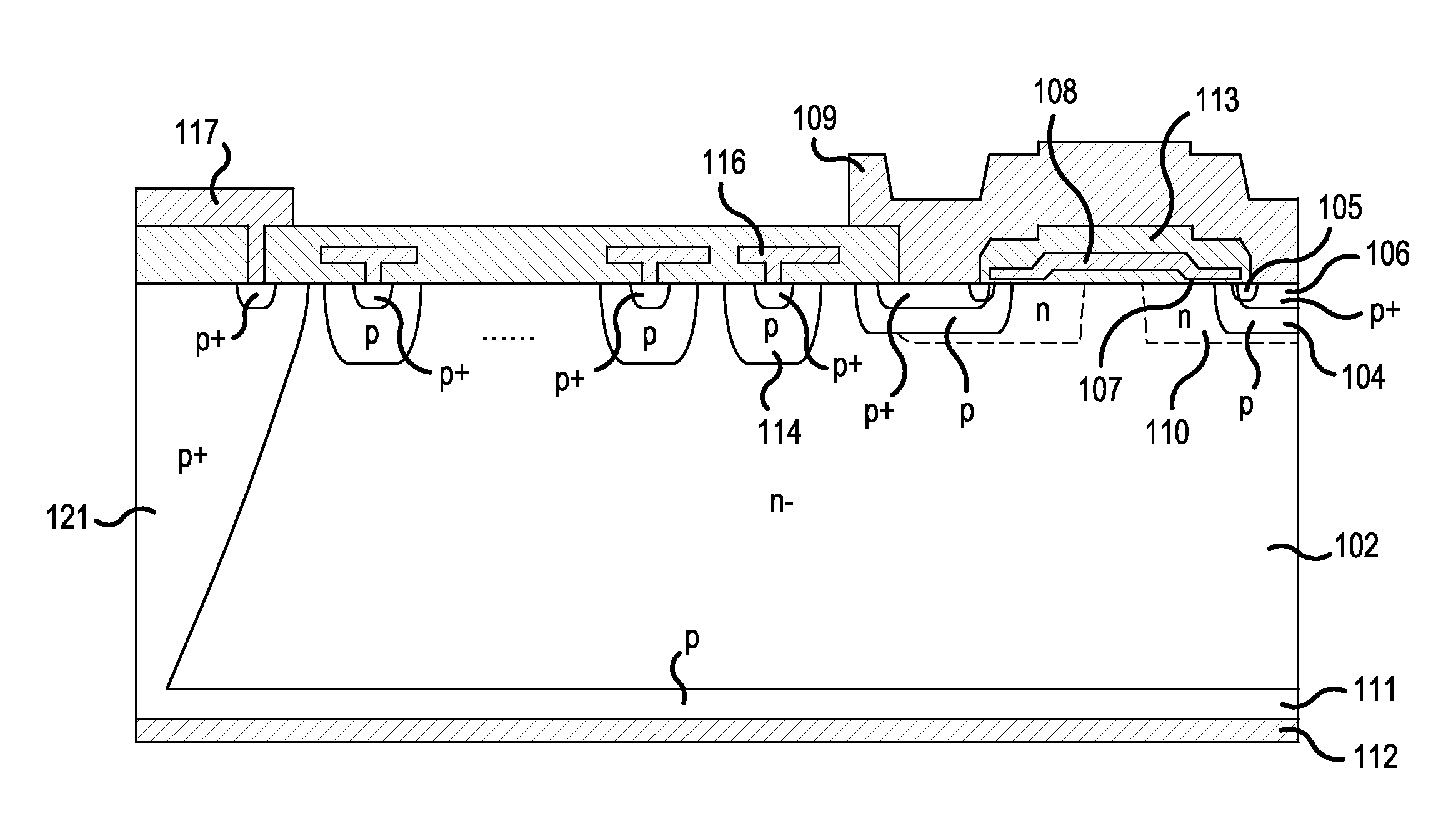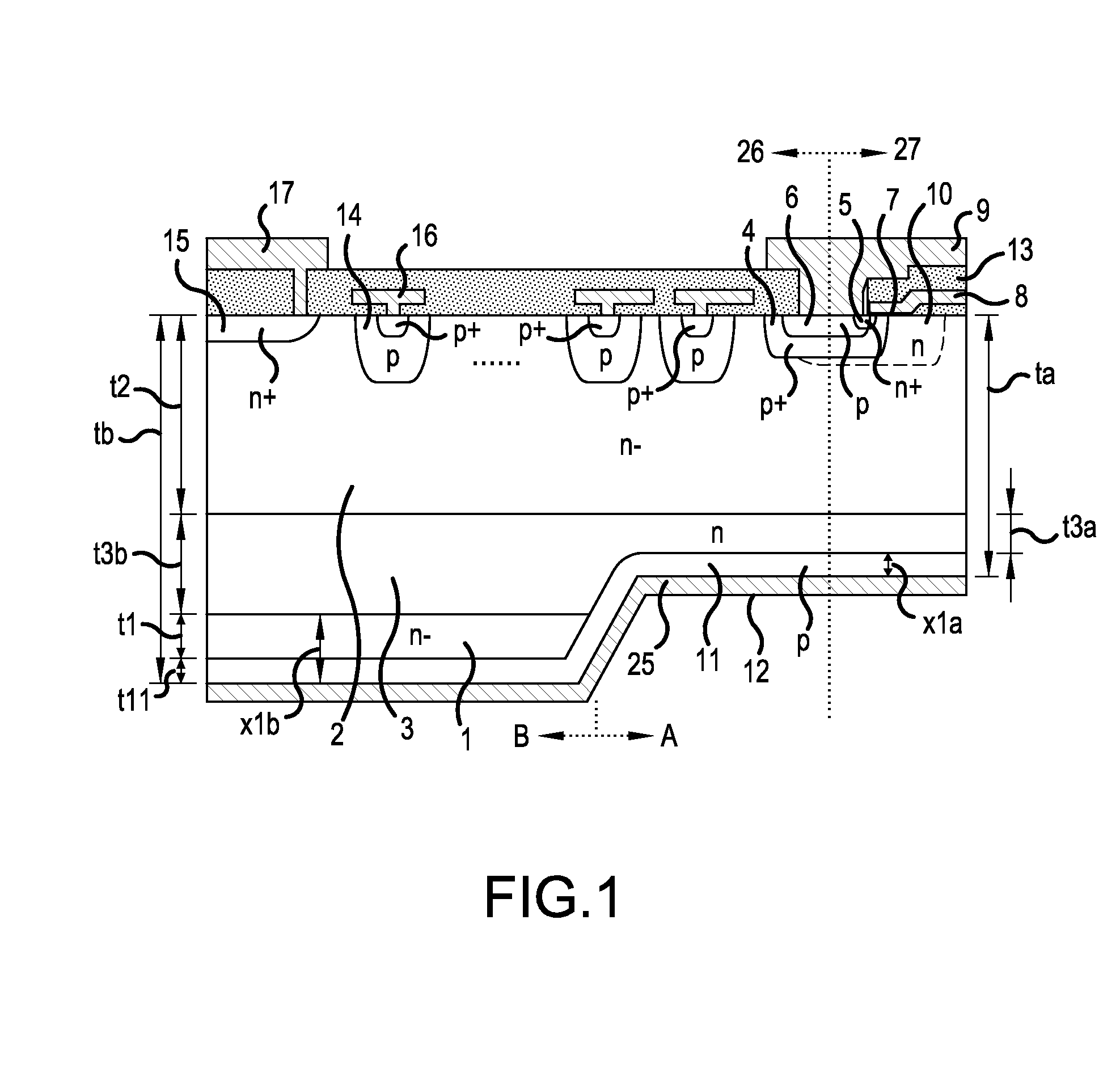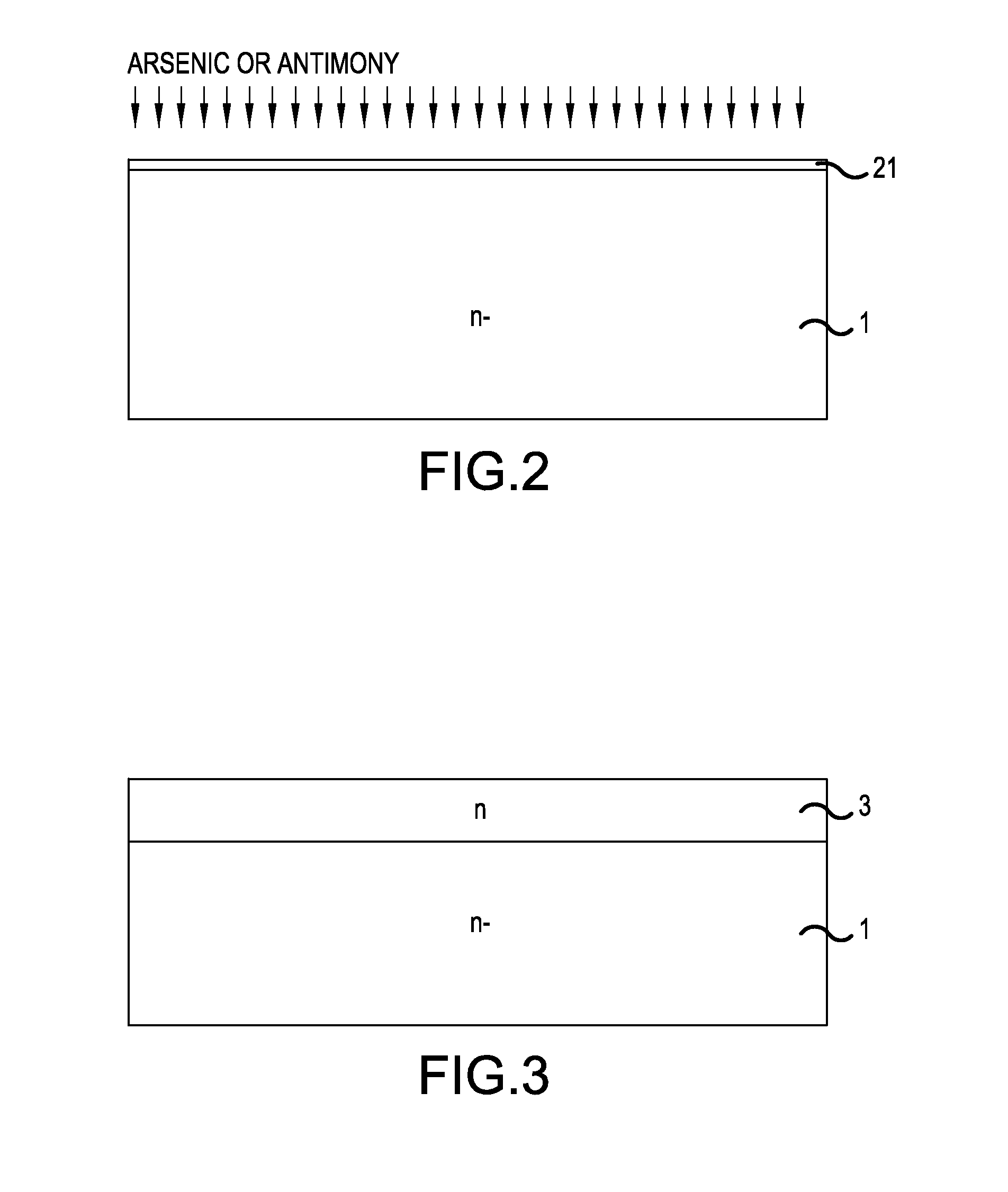Semiconductor device and semiconductor device manufacturing method
a semiconductor device and manufacturing method technology, applied in the direction of semiconductor devices, electrical devices, transistors, etc., can solve the problems of reverse breakdown voltage characteristics deterioration, inability to fabricate a low breakdown voltage igbt of a breakdown voltage class of 600v, and inability to reduce the thickness of the wafer below 200/b>, so as to reduce the thickness of the chip, reduce the concentration of stress on the wafer, and facilitate maintenance
- Summary
- Abstract
- Description
- Claims
- Application Information
AI Technical Summary
Benefits of technology
Problems solved by technology
Method used
Image
Examples
embodiment 1
[0085]A description will be given of a configuration of a semiconductor device according to Embodiment 1, with a planar gate structure field stop IGBT (FS-IGBT) shown in FIG. 1 as an example. FIG. 1 is a cross sectional diagram showing a configuration of the semiconductor device according to Embodiment 1. As shown in FIG. 1, the semiconductor device according to Embodiment 1 includes, on an n− type wafer, an edge termination structure portion 26 that relaxes an electrical field exerted on an n− type drift region 2, thus maintaining breakdown voltage, and an active region 27 through which current flows when the semiconductor device is in an on-state.
[0086]The n− type wafer is formed by, for example, an n− type FZ wafer (first first conductivity type semiconductor region) 1, an n-type field stop region (third first conductivity type semiconductor region) 3, and an n− type drift region (second first conductivity type semiconductor region) 2 being deposited sequentially from the back su...
embodiment 2
[0116]A description will be given of a semiconductor device according to Embodiment 2. FIG. 12 is a cross sectional diagram showing a configuration of the semiconductor device according to Embodiment 2. The semiconductor device according to Embodiment 2 differs from the semiconductor device according to Embodiment 1 in that a groove 35 provided in the back surface of the n− type wafer is designed so as not to reach the n-type field stop region 3. That is, the p-type collector region 11 is in contact with only the n− type FZ wafer 1 from the edge termination structure portion 26 to the active region 27.
[0117]A third distance x2a in the chip thickness direction between the p-type collector region 11 and n-type field stop region 3 in the chip inner portion A is less than a fourth distance x2b in the chip thickness direction between the p-type collector region 11 and the n-type field stop region 3 in the chip outer peripheral portion B. The third distance x2a may be an arbitrary thickne...
embodiment 3
[0123]Next, a description will be given of a semiconductor device manufacturing method according to Embodiment 3, with an example case of fabricating a 400V breakdown voltage class FS-IGBT. FIGS. 15 and 16 are cross sectional diagrams showing states partway through the manufacture of the semiconductor device according to Embodiment 3. The semiconductor device manufacturing method according to Embodiment 3 differs from the semiconductor device manufacturing method according to Embodiment 1 in that an n− type FZ wafer 41 thicker than that of Embodiment 1 is used, and that the n-type field stop region 3 is formed using a proton (H+) implantation 43 and a thermal annealing process for transforming the protons into donors.
[0124]Specifically, firstly, for example, the n− type FZ wafer 41, of a thickness greater than the thickness tb of the chip outer peripheral portion B after completion of the FS-IGBT, is prepared, as shown in FIG. 15. Specifically, the thickness of the n− type FZ wafer ...
PUM
 Login to View More
Login to View More Abstract
Description
Claims
Application Information
 Login to View More
Login to View More - R&D
- Intellectual Property
- Life Sciences
- Materials
- Tech Scout
- Unparalleled Data Quality
- Higher Quality Content
- 60% Fewer Hallucinations
Browse by: Latest US Patents, China's latest patents, Technical Efficacy Thesaurus, Application Domain, Technology Topic, Popular Technical Reports.
© 2025 PatSnap. All rights reserved.Legal|Privacy policy|Modern Slavery Act Transparency Statement|Sitemap|About US| Contact US: help@patsnap.com



